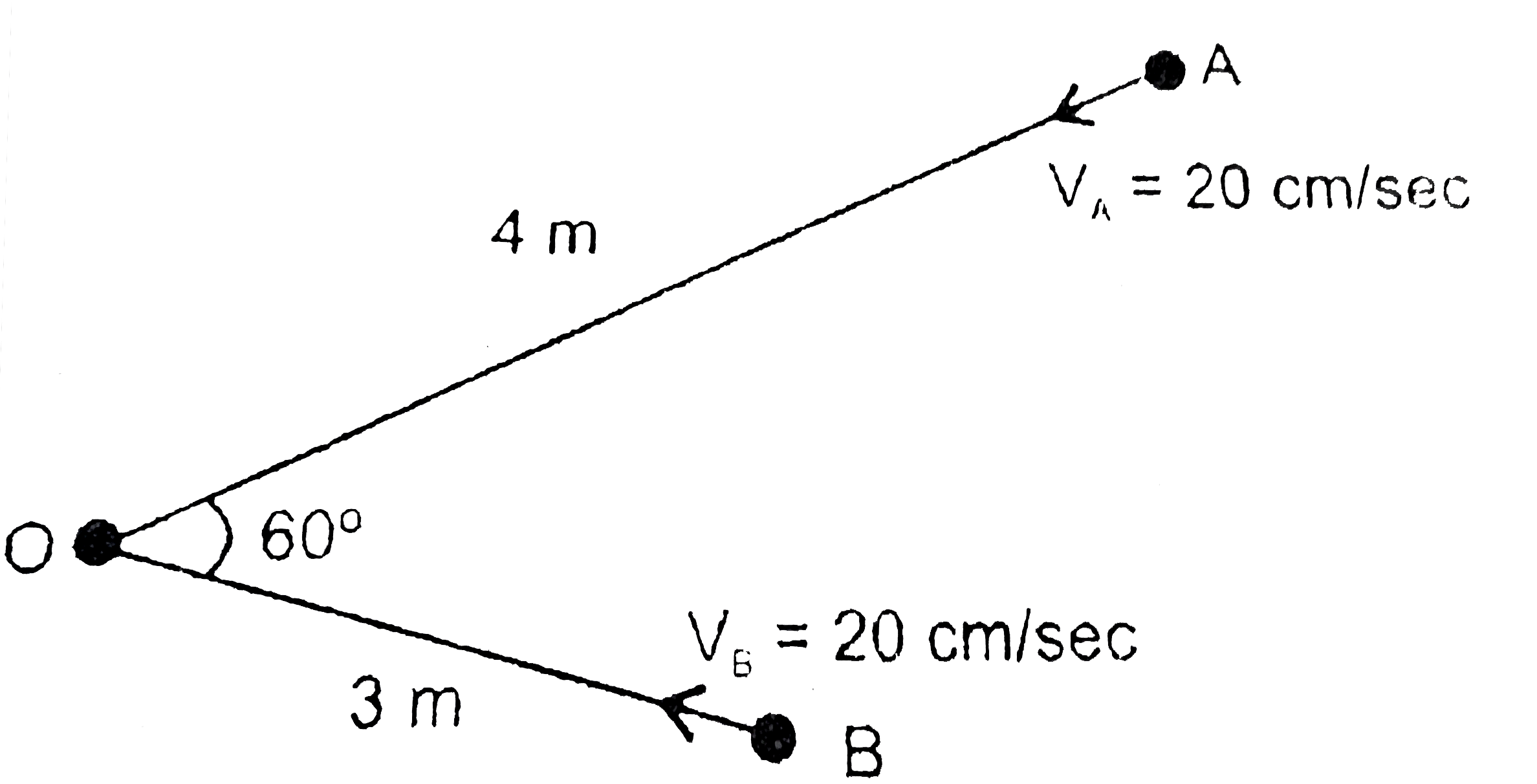A particle performs linear SHM of period 2πω about a point 'O' and is observed to have a velocity bω√3 when at a distance b from 'O'. If the particle is moving towards the positive extermity at that instant, show that it will travel a further distance b in a time π3ω before coming momentarily to rest.
Given T=2πω,v=bω√3atx=b
Substituting in v=ω√A2−x2,
we get bω√3=ω√A2−b2
Squaring, 3b3ω2=ω2=(A2−b2)
3b2=A2−b2,4b2−A2⇒A=±2b
The time taken (t) to travel form the mean position to a distance b can be found form
x=ASinωt We have, x=b,A=2b
∴b=2bsinωt,sinωt=12,ωt=π6⇒tπ6ω
∴ Further time taken to reach exterme position
=T4−π6ω=2π4ω−π6ω=π3ω
It will momentrily come to rest when it reaches the positive exterme position.
Further distance travelled =A−b=2b−b=b
Topper's Solved these Questions
- OSCILLATIONSBook:NARAYNAChapter:OSCILLATIONSExercise:C.U.Q
Explore 78 Videos
- OSCILLATIONSBook:NARAYNAChapter:OSCILLATIONSExercise:LEVEL -I (C.W)
Explore 34 Videos
- NEWTONS LAWS OF MOTIONBook:NARAYNAChapter:NEWTONS LAWS OF MOTIONExercise:PASSAGE TYPE QUESTION
Explore 6 Videos
- PHYSICAL WORLDBook:NARAYNAChapter:PHYSICAL WORLDExercise:C.U.Q
Explore 10 Videos
Similar Questions
A particle performs linear S.H.M. of period 4 seconds and amplitude 4 cm. Find the time taken by it to travel a distance of 1 cm from the positive extreme position.
View SolutionA particle is moving in a plane with velocity →v=u0ˆi+kωcosωtˆj. If the particle is at origin at t=0, (a) determine the trajectory of the particle. (b) Find its distance from the origin at t=3π/2ω.
View Solution
Knowledge Check
A particle performs SHM with a period T and amplitude a. The mean velocity of the particle over the time interval during which it travels a distance a/2 from the extreme position is
Aa/TB2a/TC3a/TDa/2TThe periodic time of a particle executing a linear S.H.M. is 2πω. If its velocity at a dis"tan"ce b from the mean position is √3bω, then the path length of the particle is
AbB2bC3bD4bA particle moves along a straight line on y-axis. The distance of the particle from O varies with time and is given by : y=20t−t2. The distance travelled by the particle before it momentarily comes to rest is
A200 mB100 mC50 mD150 m
A particle performs SHM with a period T and amplitude a. The mean velocity of the particle over the time interval during which it travels a distance a2 from the extreme position is xa2T. Find the value of x.
View SolutionTwo particles move with constant velocities towards point O along straight lines in a plane as shown. The shortest distance A and B is

View SolutionThe time taken by a particle performing SHM to pass from point A and B where it is velocities are same is 2:3. After another 2 s it returns to B. The time period oscillation is (in seconds)
View SolutionA particle executed S.H.M. starting from its mean position at t=0, If its velocity is √3bω, when it is at a distance b from the mean positoin, when ω=2πT, the time taken by the particle to move from b to the extreme position on the same side is
View SolutionA particle is moving on a circular path of radius R with uniform angular speed ω. The magnitude of average velocityof particle during time t=0 to t=2π3ω:
View Solution